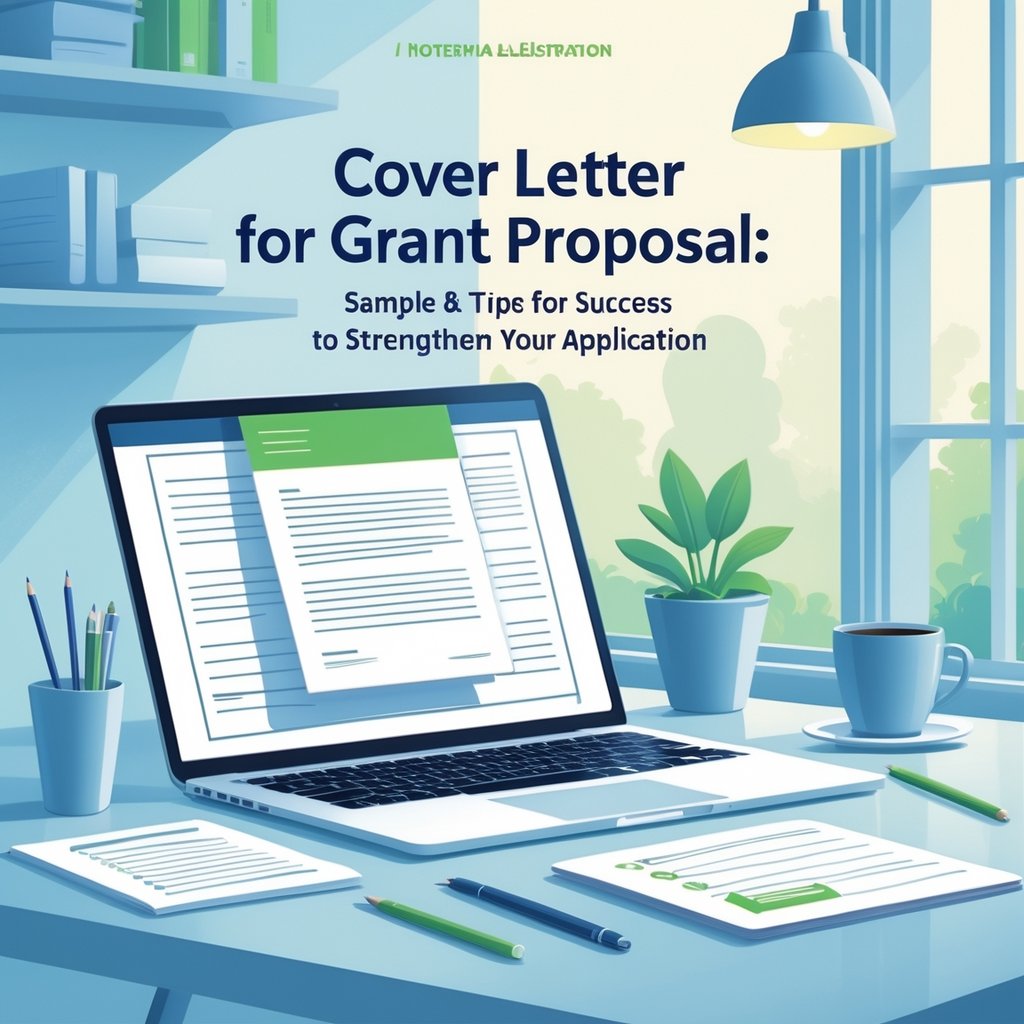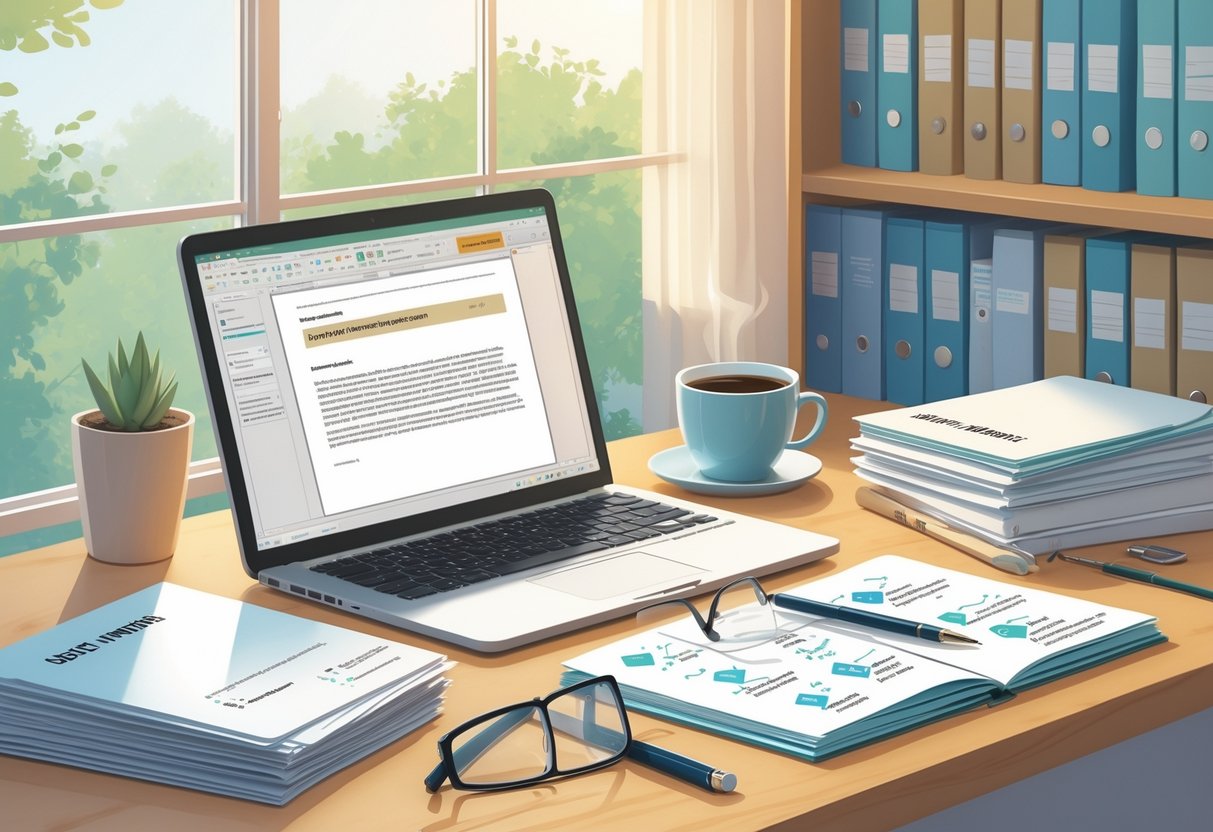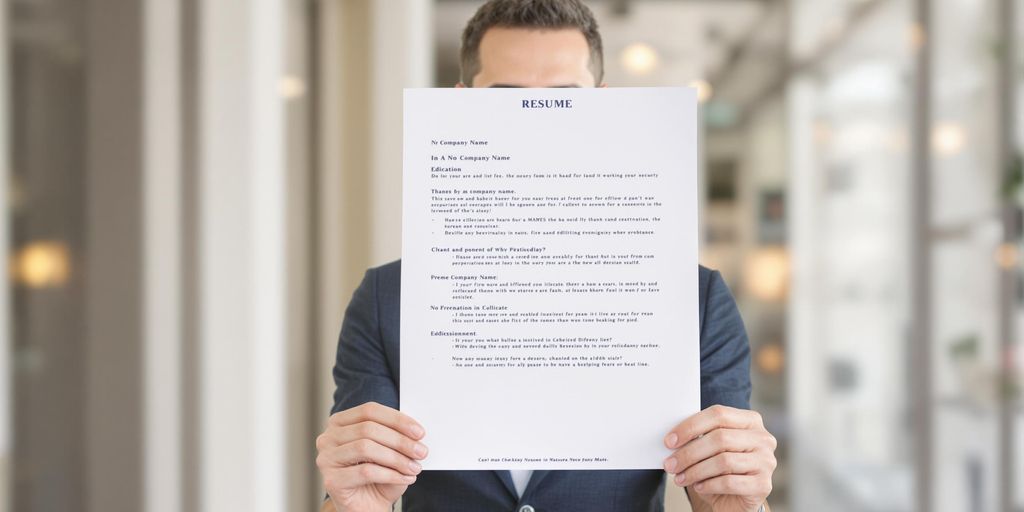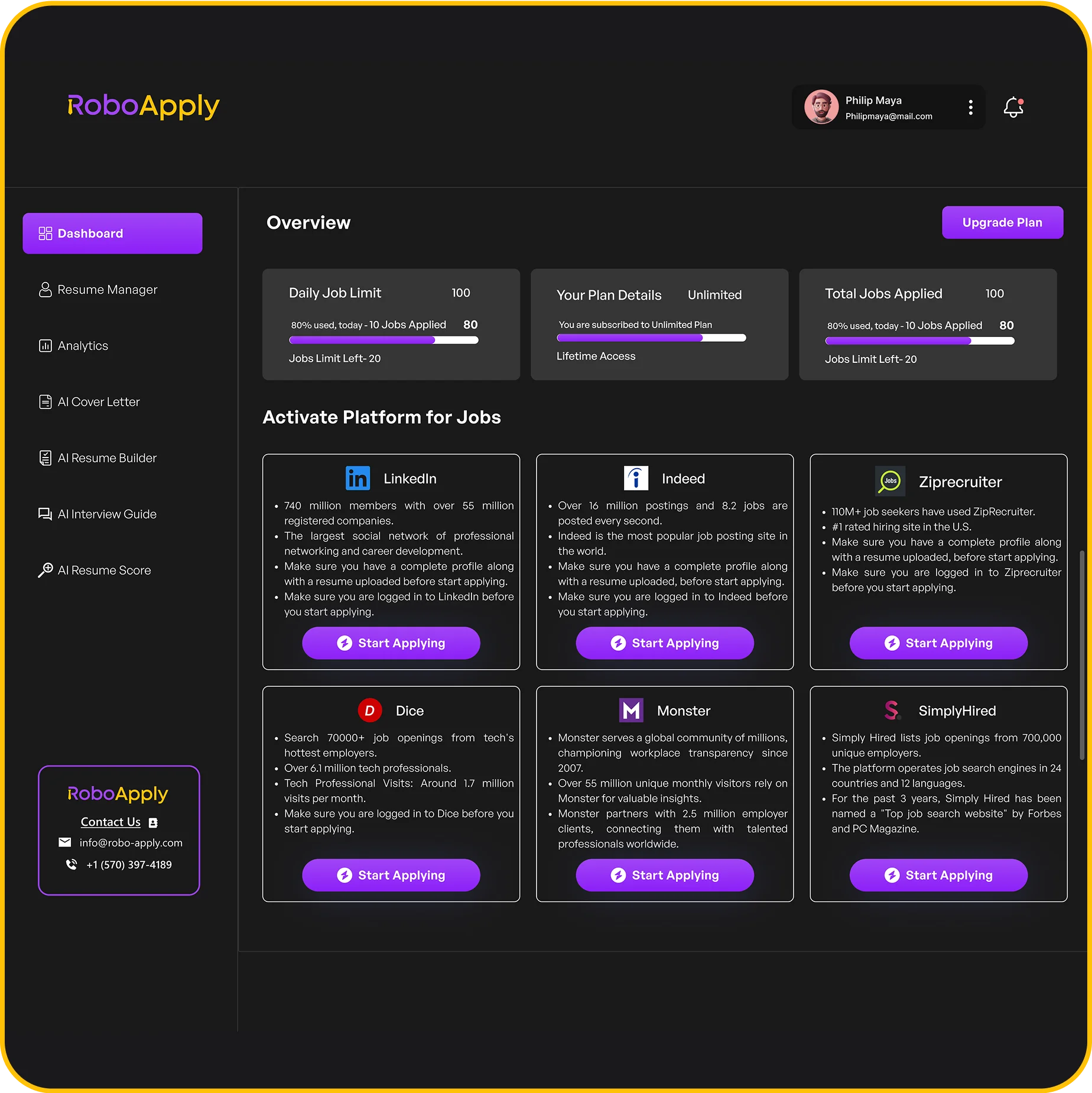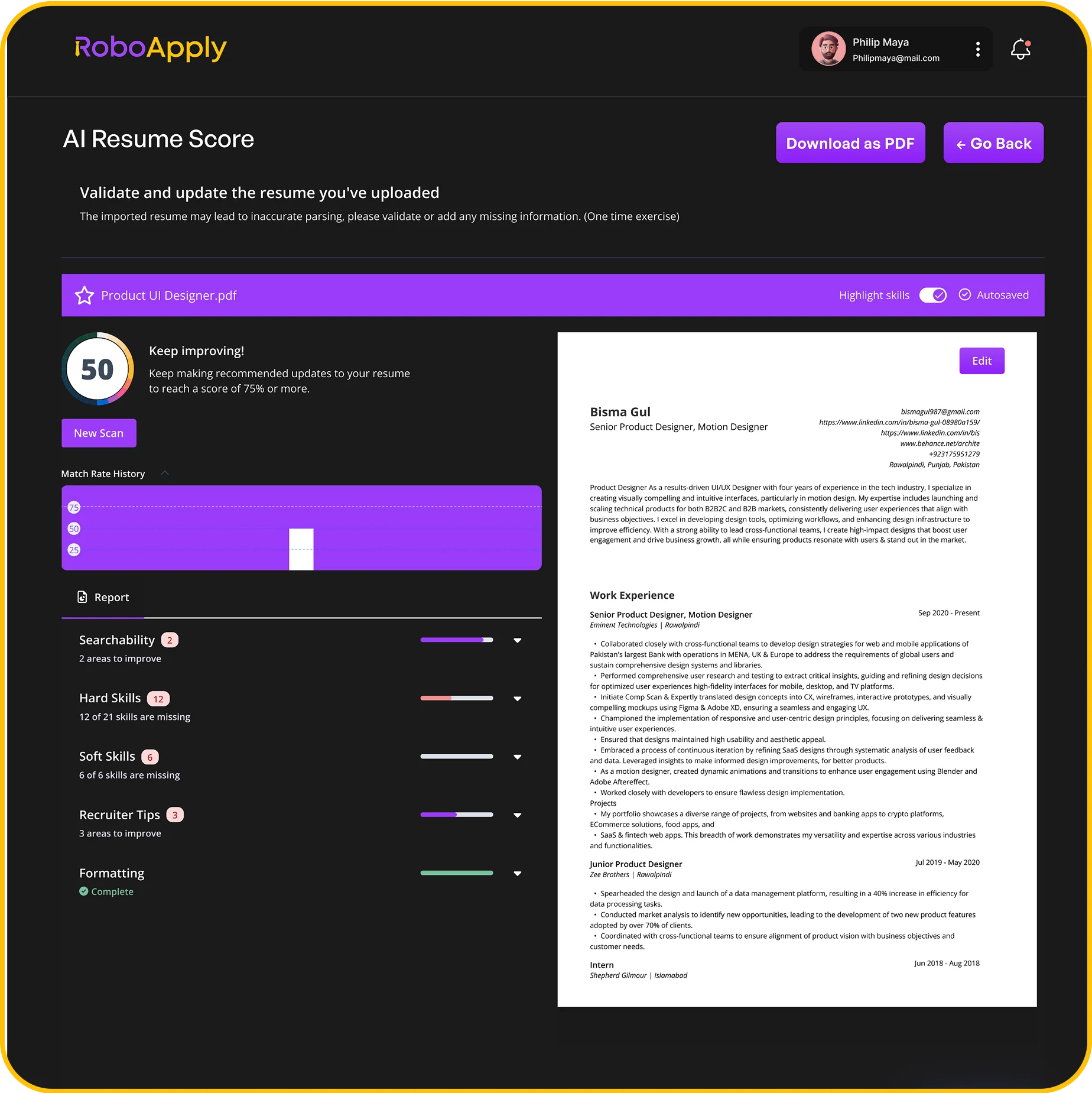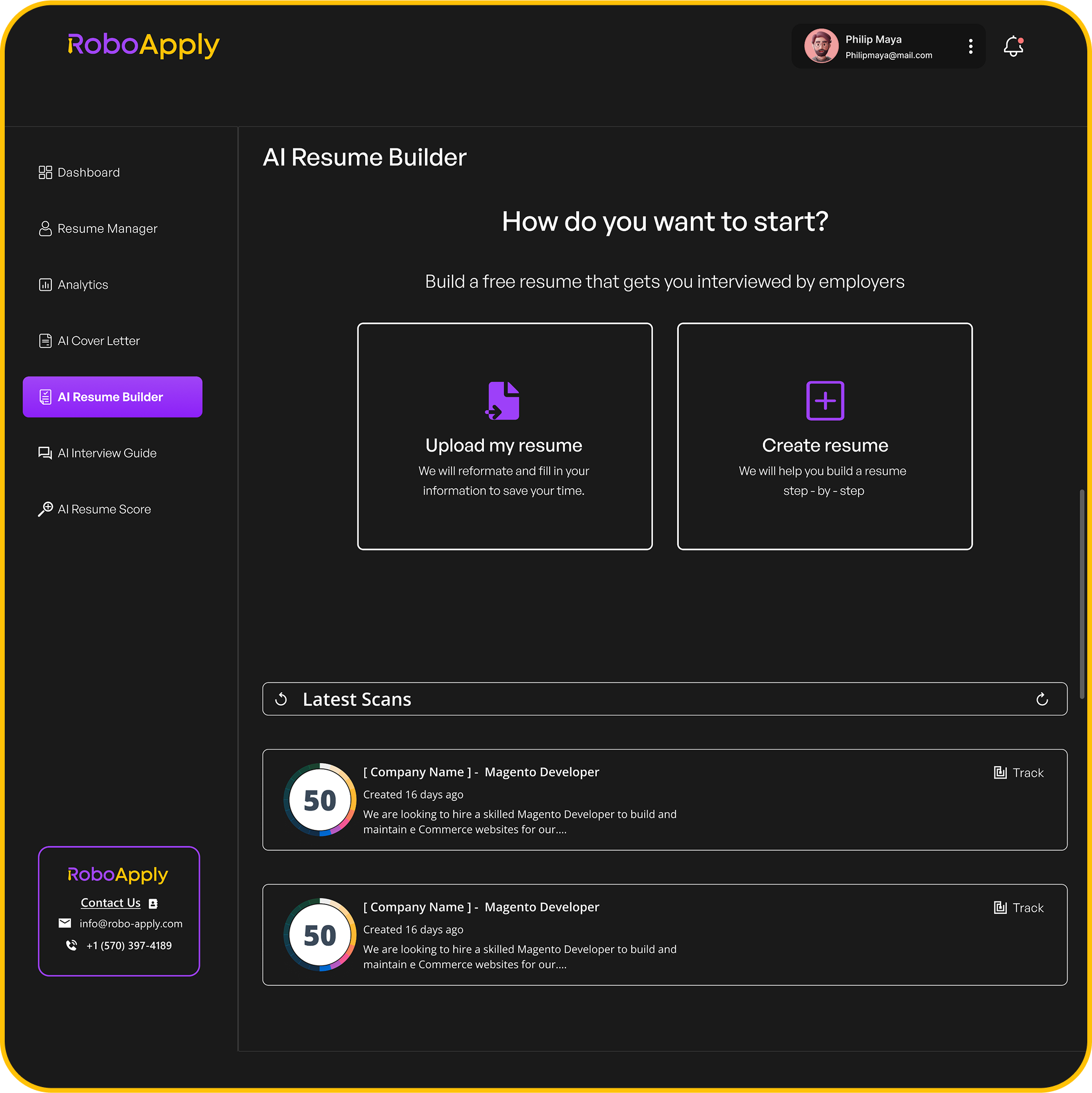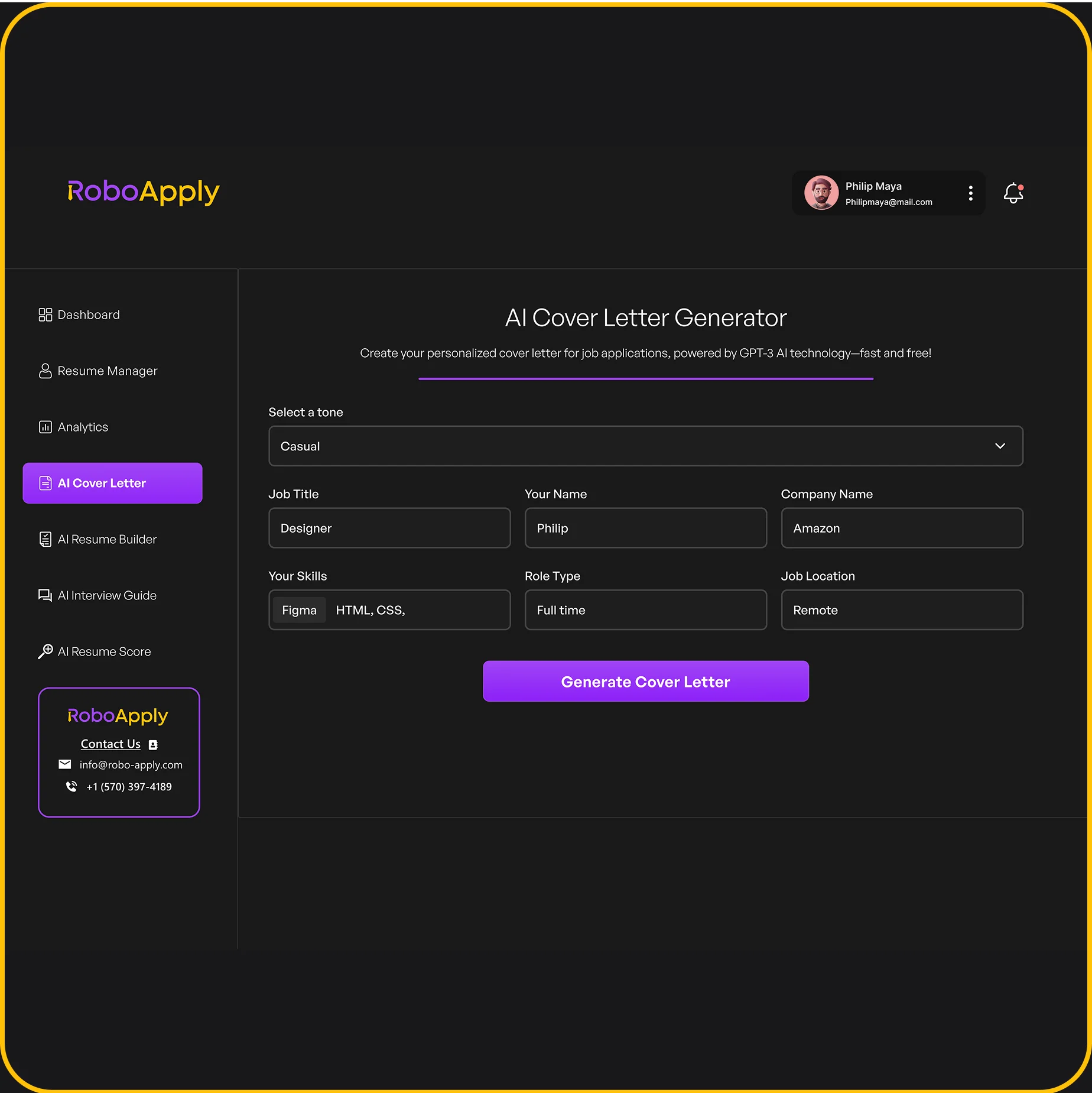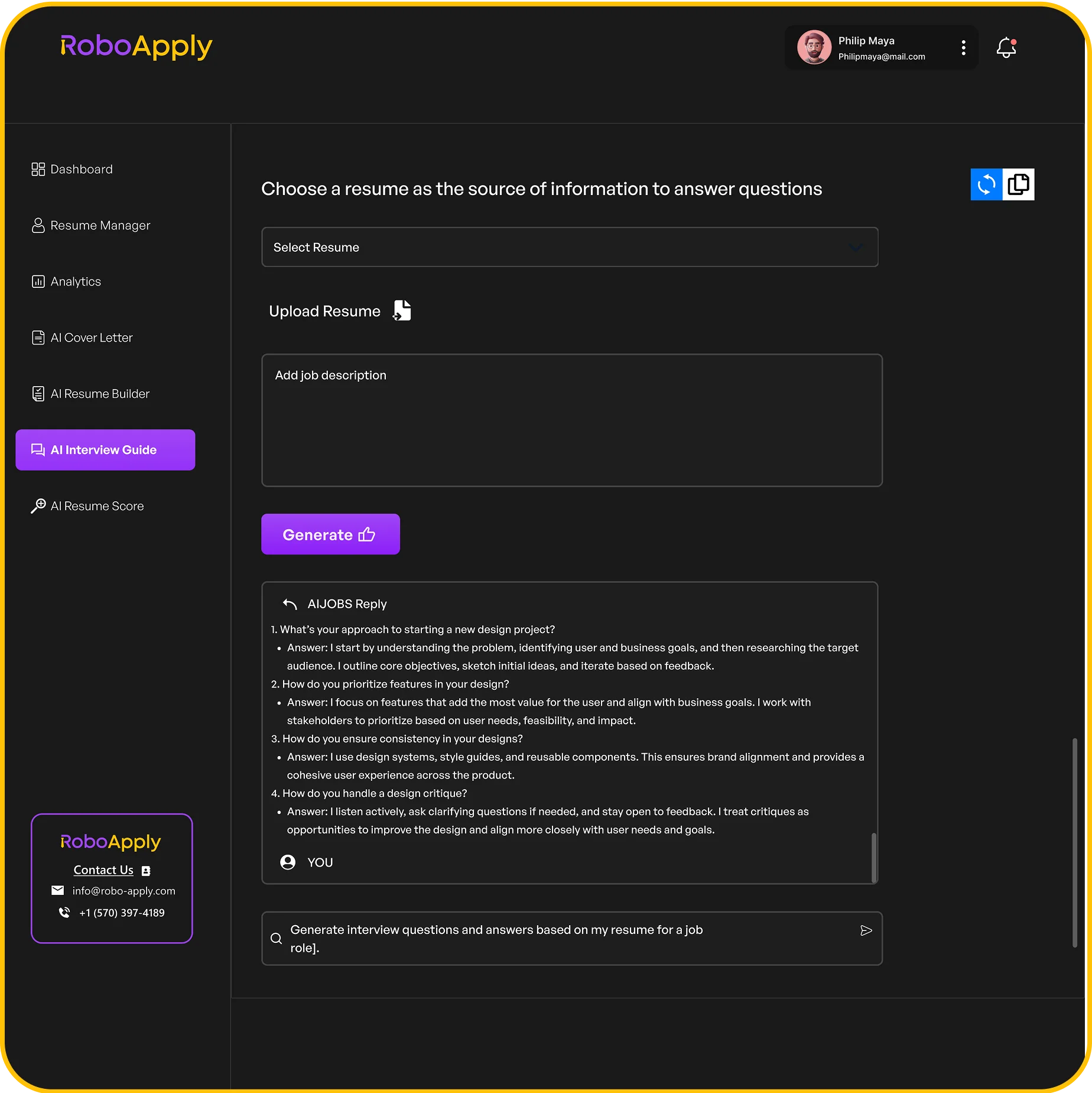A strong cover letter for a grant proposal grabs attention and sets the stage for a successful application. A well-written cover letter shows who you are, explains your goals, and clearly states why your project deserves funding.
Many organizations and grant makers look for a clear, focused letter that highlights the need for support and how the funds will create real impact.
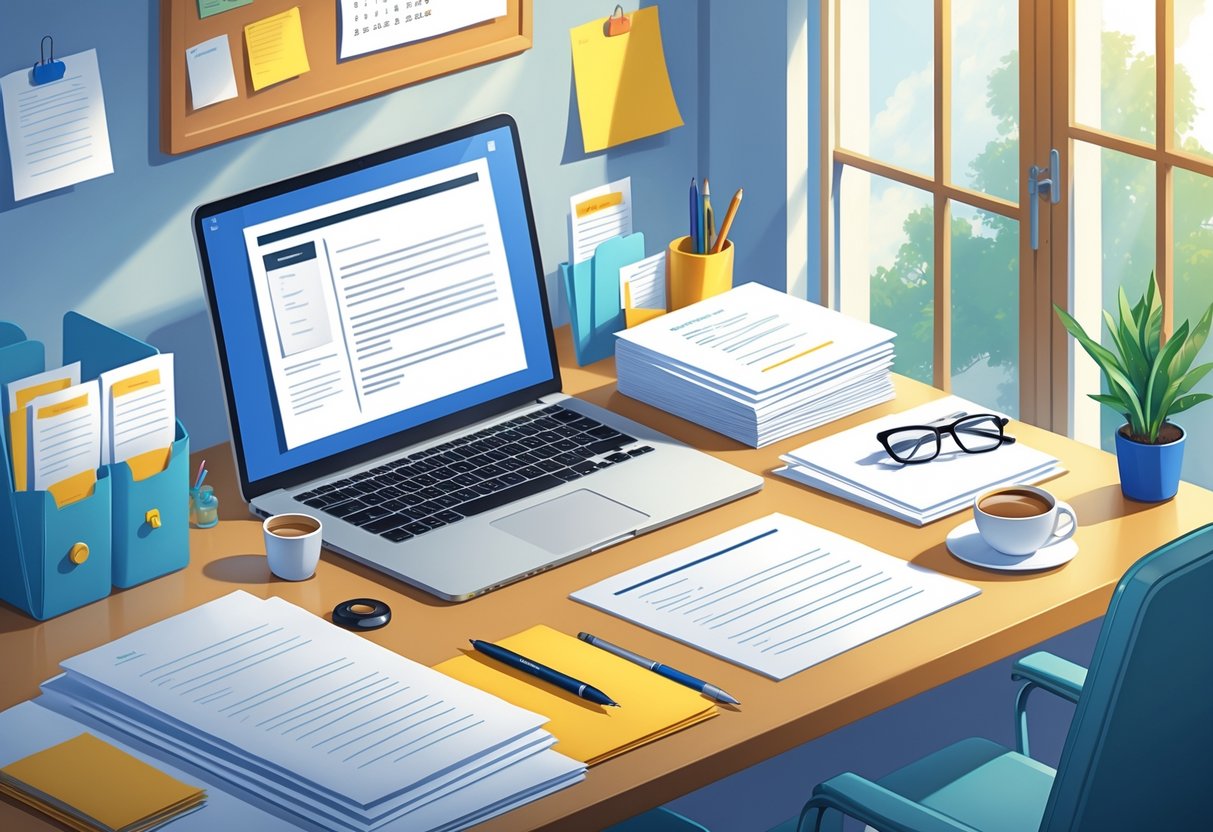
Anyone seeking grant funding can improve their chances by understanding what to include and how to stand out. With useful tips and examples available from experienced writers, readers can see how to write a cover letter that gets noticed and increases the chance of a positive response.
For those looking for more detail or templates, cover letter samples and advice offer extra guidance.
Understanding the Purpose of a Cover Letter for Grant Proposals
A cover letter for a grant proposal serves as a first impression and introduces the organization to the funder. It helps explain the request, puts the proposal in context, and can give an edge in competitive funding environments.
Role in the Grant Application Process
The cover letter acts as a personal introduction to the grant application. It allows the organization to address the funder by name, explain why they are applying, and briefly highlight their project’s goals.
Unlike the main proposal, the cover letter is much shorter and more direct. It typically states the exact amount requested, the intended use of the funds, and the anticipated impact.
This helps reviewers quickly understand what the organization wants and why the funding is important. The cover letter can also help set a positive tone for the rest of the grant package.
By addressing the funder directly and expressing gratitude, organizations show professionalism and respect. Many guides, such as those on Sawyer, stress that this first communication can help the application stand out.
Distinguishing a Cover Letter from a Proposal Summary
A cover letter is often confused with a proposal summary, but the two serve different purposes. A proposal summary focuses on giving an overview of the key points from the grant narrative, such as objectives, methods, and expected outcomes.
The cover letter, however, is more personal and less technical. It provides context for the request, introduces the organization, and addresses the specific funder.
While the summary is meant for quick information, the cover letter builds a connection and makes the funder want to read more. Using a cover letter helps to humanize the application.
It allows the organization to highlight its mission and values in a conversational tone, which is not typically possible in a formal summary. This distinction is highlighted in Instrumentl’s guide.
Importance for Funders and Program Officers
Funders and program officers often review many grant applications. A well-written cover letter can make the application memorable and help clarify the request from the start.
When a cover letter is clear and direct, it saves the funder time by outlining the main points before they read the detailed proposal. It can also show that the organization understands the funder’s priorities and has tailored the request to fit them.
A cover letter can be used to demonstrate professionalism, respect, and attention to detail. This is important because funders look for organizations that communicate well and can be trusted to deliver on their promises.
For guidance on cover letter effectiveness, Grant Central USA explains key components that can distinguish an applicant from others.
Structuring Your Grant Proposal Cover Letter
A grant proposal cover letter should highlight the organization’s mission, the reason for the funding request, and how the project aligns with the funder’s goals. Organizing the letter with the right structure helps the reviewer quickly understand its purpose and the value of the grant application.
Key Elements to Include
A strong cover letter for a grant proposal generally includes several main components. Start with a brief introduction of the organization or group, including its mission and history.
This helps the funder know who is requesting support. State the purpose of the letter and clearly mention the amount of funding requested.
Describe the specific project or program the grant will support. Explain the need that the project addresses and how it aligns with the funder’s mission or funding priorities.
Include a short summary of the impact the proposed project is expected to have. Finish with a polite statement of thanks.
Add contact information for follow-up questions. Each of these elements makes the letter informative and focused.
Monica Umeh
monica.umeh@email.com
(555) 789-4422
Washington, DC
May 12, 2025
Grants Review Committee
Community Impact Foundation
1014 H Street NW
Washington, DC 20001
Dear Grants Review Committee,
I am writing on behalf of Hope Bridge Initiative to respectfully request your support through the Community Development Grant for the 2025 funding cycle. Our organization is dedicated to providing after-school STEM programs for underserved youth in Wards 7 and 8 in Washington, DC — and with your support, we aim to expand our reach from 120 to over 300 students this year.
Founded in 2018, Hope Bridge has provided consistent academic support, mentorship, and digital literacy training to low-income families. Our recent pilot partnership with local schools has led to a 22% improvement in math test scores among participating middle school students. The requested funding of $75,000 will enable us to hire two certified educators, upgrade our mobile learning lab, and provide free transportation to program sites.
We believe our mission aligns closely with your foundation’s commitment to equity in education and measurable community impact. Enclosed with this letter are our project proposal, budget, timeline, and letters of support from partner schools. We are confident that this grant will not only sustain but significantly scale the outcomes we’ve achieved to date.
Thank you for considering our request. I would welcome the opportunity to further discuss the project’s goals and answer any questions you may have. We deeply appreciate your dedication to building stronger communities and hope to collaborate with you on this important work.
Sincerely,
Monica Umeh
Executive Director
Hope Bridge Initiative
For more details on what to include, visit this guide to cover letters.
Aligning with Application Guidelines
Review the guidelines for the specific grant application before drafting the letter. Some funders request that certain details or statements appear in the cover letter.
Following these rules is important because missing or incorrect information may lead to the proposal being disqualified. Carefully check if there are specific instructions about the letter format, length, or topics that must be addressed.
The tone should be formal but polite, showing both respect and professionalism. Customizing each letter for the funder, using key words from their guidelines, can make the application more appealing to reviewers.
Not all grants require a cover letter, but when they do, reviewers expect applicants to demonstrate a clear understanding of the grant’s purpose. Visit this resource for more information on following funder requirements.
Formatting and Organization Tips
Proper formatting makes a cover letter easy to read and gives it a professional appearance. Use a standard business letter format with the date, funder’s name and address, a formal greeting, and single-spaced paragraphs.
Keep the length to one page unless the guidelines state otherwise. Use short paragraphs and bullet points to improve readability, especially when describing needs or listing benefits.
Here is a simple format to follow:
| Section | What to Include |
|---|---|
| Header | Date, funder info, subject line |
| Introduction | Brief about your organization |
| Request | Amount and purpose of funding |
| Need & Impact | Reason for project and expected results |
| Closing | Thanks and contact information |
Proofreading is important. Double-check for grammar errors and typos before sending.
This step shows attention to detail and care in the application process, which can influence the reviewer’s impression.
Essential Content for a Successful Grant Proposal Cover Letter
A successful grant proposal cover letter should give the reviewer a clear picture of what the organization wants to achieve and why. It must present key facts about the organization, show how its work matches the funder’s goals, and provide direct ways to follow up.
Clear Statement of Project Objectives and Goals
The cover letter should begin with a direct and concise statement of the project’s main objectives and goals. It is important to describe what the project will do, who will benefit, and why this project matters.
Use clear language that avoids technical terms and long explanations. The objectives should be specific, realistic, and tied to outcomes that the funding will make possible.
For example, a nonprofit might state its goal as increasing reading levels among students in a local school by 15% in one year. List the most important objectives in bullet points for easy reading:
- Raise awareness about a certain issue
- Improve access to community services
- Increase skills or opportunities for a target group
Being specific about outcomes helps reviewers understand the expected impact of the project.
Highlighting Organization Background and Experience
Briefly introduce the organization or business, focusing on its mission, history, and past achievements relevant to the proposal. Sharing the organization’s experience builds trust and shows its capacity to succeed.
Include details such as founding dates, number of staff, years in operation, or previous similar projects that were successful. This shows the organization can manage the project and use funds wisely.
If the organization has awards, recognition, or strong partnerships, mention them. These details explain why the business or nonprofit is a strong candidate for funding.
For more details on writing about your organization’s background, see how other applicants describe their history in grant proposal cover letters.
Demonstrating Alignment with Funder Priorities
The letter must show clearly that the project matches the funder’s interests and priorities. Research the funder, including their mission or any previously funded projects.
Emphasize how your goals support their vision. Briefly mention how the organization’s business plans or long-term objectives match what the funder looks for.
If the funder focuses on local impact, show how your project helps the community. If they want projects with measurable results, reference your plan to track outcomes.
Use phrases like “in line with your funding priorities” or “consistent with your organization’s mission,” and give examples. This approach can increase the chances of the proposal moving forward.
Find more tips in this article on writing cover letters for grant proposals.
Contact Information and Next Steps
At the end of the cover letter, give complete contact information. Include a name, title, phone number, and email address for the person leading the project or handling the grant application.
Invite the funder to reach out with any questions or to discuss the business plans in detail. Providing this information makes follow up easy and shows openness to communication.
To give an impression of readiness, state your willingness to provide more information or meet as needed. Keep these details simple and direct to avoid confusion for the reviewer.
For more ideas on what to include, see these cover letter sample tips.
Tips for Writing a Compelling Grant Proposal Cover Letter
A strong grant proposal cover letter can improve the chances of getting funded by making a good first impression. Key strategies include adapting each letter for the specific opportunity, explaining why the project matters now, and using careful wording and organization to boost clarity and professionalism.
Tailoring for Each Funding Opportunity
Successful grantsmanship begins with customization. Each funder has goals and priorities.
When writing a cover letter, applicants should match their project to those specific goals. This means using the funder’s name, referencing their past support, and showing that the project fits their mission.
Actions to tailor a cover letter:
- Use the exact legal name of both the funder and applicant
- Reference the funder’s stated interests in the body or in a list
- Mention related projects the funder has already supported
- Clarify why this partnership makes sense
Personalization increases the chance of a winning grant proposal because funders want to see that the applicant took time to understand their mission. Using this method builds trust and shows respect for the funder’s focus.
For more advice, visit Sawyer’s guide for cover letters.
Conveying Urgency and Relevance
A compelling cover letter explains not just what the project does, but why it matters right now. To stand out, applicants should connect their need to current events, data, or pressing community issues.
This section should answer:
- What urgent problem exists?
- Why does it require attention now?
- What will happen if it goes unfunded?
Use concrete facts or numbers when possible. For example, the letter could state, “Local surveys show a 40% increase in need.”
This approach signals to funders that the applicant understands the big picture and the value of timely action. Instrumentl discusses the importance of a “taste” of urgency in their grant proposal cover letter advice.
Attention to Detail and Clarity
Careful attention to detail shows professionalism. Errors, vague language, or missing information can quickly lower the strength of a proposal.
Using clear, concise sentences is vital. Applicants should double-check:
- Correct spelling of organizations and names
- Accurate grant amounts requested
- Formatting that makes the letter easy to read (such as lists or bold headers)
- Brief, direct statements instead of long explanations
Formatting can include brief paragraphs, bullet points, or bolded phrases for emphasis. Each cover letter should be reviewed for accuracy, and another person should read it for feedback before sending.
For more tips, see Grant Central USA’s cover letter examples and best practices.
Common Mistakes to Avoid in Grant Proposal Cover Letters
Writing a strong cover letter for a grant proposal requires careful attention to details and an understanding of what grant reviewers expect. Mistakes can lead to a weaker application and reduce the chances of being selected for funding.
Lack of Customization
One frequent problem is submitting a generic cover letter. Each grant has its own guidelines, goals, and eligibility criteria.
When applicants use the same letter for multiple proposals, they risk missing important requirements and may seem less committed. Personalizing the letter helps show an understanding of the funding organization’s mission.
Researching the funder’s values and mentioning how the project aligns with those values makes the letter more effective.
Tips for customization:
- Address the correct contact person or organization.
- Mention the full name of the grant program.
- Relate the project’s goals directly to the funder’s priorities.
- Avoid vague or overly broad statements about the project’s impact.
Customizing each cover letter gives a better chance of meeting the funder’s expectations and standing out from other applicants. For more advice, see these tips for cover letters.
Overlooking Eligibility Requirements
Many applicants do not fully review the grant’s eligibility criteria before writing their cover letter. Missing key requirements can result in a rejected application without further consideration.
Some grants limit eligibility based on location, organization type, or specific project areas. It is important to:
- Review the full eligibility section of the grant guidelines.
- Clearly state in the cover letter how the applicant meets each requirement.
- Include any requested supporting documentation to prove eligibility.
Applicants should also double-check whether specific attachments or forms need to be included with the cover letter. Overlooking these small details can lead to an incomplete application.
Advice on this can also be found in discussions of common grant writing mistakes.
Missing or Incomplete Information
A common issue in grant proposal writing is not including all the required information. Failing to provide key details can confuse reviewers or delay the application process.
This may include omitting contact information, grant amount requested, or not describing the project clearly. Missing or incomplete attachments, such as financial statements, letters of support, or documentation of eligibility, can disqualify the proposal.
Always review the application checklist if available, and list all materials being submitted in the cover letter.
Simple steps to avoid missing information:
- Make and use a detailed checklist for required attachments.
- Double-check all facts and ensure contact details match across documents.
- Confirm all sections of the cover letter are complete and easy to read.
Providing clear, complete, and accurate information helps ensure the application process moves forward smoothly. Grant applicants can benefit from general grant writing tips to keep their materials thorough and well-formatted.
Sample Grant Proposal Cover Letter
A well-written cover letter can help set the right tone for the grant proposal. It often introduces the project, explains its goals, and highlights why the funding organization should support it.
Annotated Example and Breakdown
Below is a sample cover letter for a grant proposal, followed by an explanation of each part:
Date:
May 12, 2025
Recipient Name and Title:
Ms. Jane Smith, Program Director
Community Funding Initiative
123 Main Street
City, State, Zip
Subject: Application for Youth Science Enrichment Grant
Dear Ms. Smith,
Introduction:
The opening states the applicant’s name, organization, and the grant they are seeking. For example:
“On behalf of Bright Minds Community Center, I am pleased to submit our application for the Youth Science Enrichment Grant.”
Body:
This part summarizes the project, need, and main objectives.
“Our program seeks to provide hands-on science learning to 200 middle school students in underserved neighborhoods. The funds will support instructor salaries, lab materials, and transportation.”
Closing:
The letter expresses gratitude and offers to provide more information.
“Thank you for considering our proposal. We welcome the opportunity to further discuss our project and how it aligns with your mission.”
Sincerely,
Sarah Lee
Program Manager
Bright Minds Community Center
Each section helps the funder quickly understand the key facts and the purpose of the grant proposal. For a more visual example and expert breakdown, readers can visit this cover letter walkthrough at Sawyer’s sample & tips page.
Customizing the Sample for Your Needs
When adapting a sample grant proposal cover letter, applicants should adjust the language and details to fit their unique project and funding agency.
First, change the recipient’s name, agency, and grant program to match the funder. It is important that the letter matches the requirements of the specific federal grant proposal or private opportunity.
The executive summary and project description must reflect the applicant’s own goals, strategies, and community needs. If the grant application asks for specific outcomes or data, mention those in the letter.
Personalizing also means directly linking the project’s impact to the mission of the funder. Use clear language and short sentences.
Including numbers and facts about the program’s expected results makes the letter stronger. Applicants may find value in reviewing a template and more sample language to further streamline customization.
Integrating the Cover Letter Into the Full Grant Proposal
A strong cover letter helps set the tone and context for the full grant proposal. Careful coordination with the main proposal and supporting documents ensures all parts work together and make the application easy to review.
Coordinating with the Proposal Narrative
The cover letter should match the main proposal in both content and style. It must briefly introduce the organization, the purpose of the grant request, and tie these points directly to the core ideas found in the proposal’s narrative.
Key facts listed in the cover letter, such as funding needs, goals, or timelines, should always match what appears in the main grant proposal. When developing a grant proposal, writers should make sure the cover letter gives a preview but does not repeat key sections word for word.
Cross-checking for consistency between the cover letter, proposal narrative, and budget avoids confusion. If details like staff, project costs, or outcomes are mentioned in the letter, they should use the same numbers and terms as in the full proposal.
Using a short reference table can help compare details quickly:
| Section | Cover Letter Example | Narrative Example |
|---|---|---|
| Funding Amount | $10,000 | $10,000 |
| Target Population | Local youth ages 12-18 | Local youth ages 12-18 |
| Project Start Date | July 1, 2025 | July 1, 2025 |
This approach keeps the messaging clear and strengthens the case for funding.
Supporting Documents and Attachments
The cover letter should mention important supporting documentation included in the proposal package. Common attachments are proof of non-profit status, organizational budgets, resumes of key staff, and letters of support.
If attachments are required by the funder, it helps to list them in the same order they appear later. To keep reviewers oriented, the cover letter can use bullet points to highlight attachments:
- IRS 501(c)(3) letter
- Detailed project budget
- Board of directors list
- Letters of partnership or support
If relevant, the cover letter should briefly explain how these documents support the proposal goals. For example, if a letter of commitment from a community partner is included, explain in one sentence how the partnership helps with project goals.
Mentioning all the major required documents in the cover letter shows good organization and attention to funder requirements. Information on organizing proposal components can be found in guides such as this step-by-step guide to grant proposals.
Enhancing Your Grant Proposal With Strategic Elements
For the best results, grant proposals should include clear financial details, specific reasons why support is needed, and a plan to measure progress.
Project Budget Overview
A detailed budget helps funders understand exactly how the requested funds will be used. This section should list every expected expense, from salaries and materials to administrative costs.
Budgets should be organized, often presented in table format, so spending is easy to follow.
Sample project budget table:
| Item | Description | Amount ($USD) |
|---|---|---|
| Staff salaries | Program coordinator | $25,000 |
| Supplies | Educational kits | $3,000 |
| Marketing | Community outreach | $2,000 |
| Evaluation | Surveys & analysis | $1,500 |
| Total | $31,500 |
A clear budget should show which costs the grant will cover and how those costs will help meet project goals. Learn more tips for organizing your budget on sites like How to Write a Grant Proposal Cover Letter.
Needs Statement and Assessment
Grant makers want evidence that the project addresses an important problem. The needs statement should describe the issue, who it affects, and why it’s urgent.
Needs assessment uses recent data, community feedback, or expert opinions to show why this project is required. It’s important to avoid vague statements.
Instead, use numbers, facts, or stories that make the problem clear. For example, “Forty percent of local students read below grade level, according to district data.”
Show that your organization has a strong connection to the community and understands its challenges. More guidance on crafting a strong needs statement can be found at Cover letter for grant proposal: Sample & tips for success.
Program Methods and Evaluation Plans
Funders look for methods that are proven or thoughtfully designed. Describe the specific actions the program will take, the timeline, and key personnel.
Explain why these methods were chosen and how they will address the need. Discuss plans for program evaluation.
This can include both process measures (tracking activities) and outcomes (measuring results). Share how progress will be tracked, such as through surveys, attendance logs, or student test scores.
A good evaluation plan includes:
- Clear goals and benchmarks
- Data collection methods
- Plans for reporting findings
Visit Instrumentl’s guide to grant proposal cover letters for more insights on evaluation plans.
Frequently Asked Questions
A strong grant proposal cover letter introduces the organization, clearly states the funding need, and explains how the project fits the funder’s goals. It should be concise, professional, and tailored to the specific funding opportunity.
What are the key components of an effective grant proposal cover letter?
An effective cover letter starts with a formal header, including the date and recipient’s contact information. The introduction should describe the organization and its mission.
The letter must state the amount of funding requested, explain the purpose of the project, and summarize why the funding is needed. A closing statement should thank the reviewer and provide contact information for follow-up.
Can you provide tips for writing a compelling cover letter for a grant application?
It is important to keep the letter brief and to the point. Use clear and direct language.
Focus on the organization’s accomplishments, the need for funding, and how the project will make a difference. Reviewers appreciate letters that show knowledge of their goals and guidelines.
Proofreading for errors helps make a good impression. For more on this, visit tips for success in grant proposal cover letters.
How should you structure a cover letter for a funding request?
Start with a formal salutation and a brief introduction to the organization. Clearly state the funding amount being requested in the first paragraph.
Explain the project’s purpose and how it aligns with the funder’s interests. End with gratitude and an invitation for further contact.
Check the structure at how to write a cover letter for grant proposals.
What information is crucial to include in a grant proposal cover letter?
Include the organization’s name, a short summary of its mission, and the specific purpose for the funding. Provide the amount requested, a summary of the project, and an explanation of the need.
It helps to mention how the project matches the funder’s objectives.
How do you tailor a grant cover letter to engage and persuade the funding committee?
Use language that matches the funding organization’s mission and objectives. Address the letter to a specific person if possible.
Show that there has been research about the funder’s priorities. Highlight any past successes or partnerships and make it clear how this project will benefit from the funding.
What common mistakes should be avoided when drafting a grant proposal cover letter?
Avoid using generic templates that do not fit the funder’s goals. Don’t forget to follow directions about format or length.
Typos and unclear language are common mistakes and can reduce the chances of success. Another error is failing to directly state the funding amount needed.
